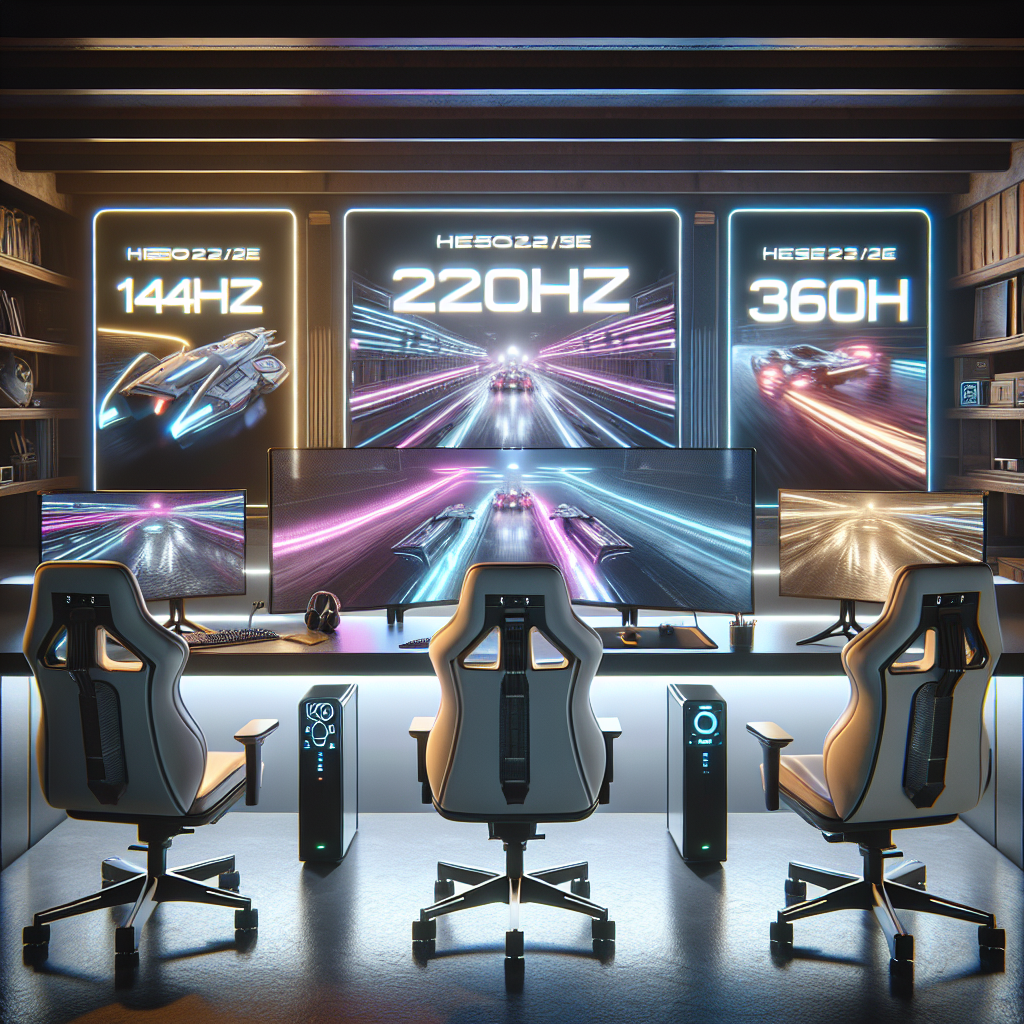Best Gaming Monitors in 2025: 144Hz, 240Hz, or 360Hz?
Introduction
In 2025, the gaming monitor market has seen significant advancements, offering an array of high-refresh-rate options tailored to enhance the gaming experience. Among these, 144Hz, 240Hz, and 360Hz monitors have become particularly prominent, each catering to different types of gamers. The choice between these refresh rates largely depends on the user’s specific gaming needs, the genres they prefer, and the capabilities of their hardware. As technology progresses, these monitors have not only improved in refresh rate but also in display technology, resolution, and adaptive sync capabilities, making them a crucial component for competitive and casual gamers alike.
Best Gaming Monitors in 2025: 144Hz, 240Hz, or 360Hz?
In the ever-evolving world of gaming technology, the quest for the perfect gaming monitor continues to be a topic of hot debate and innovation. As we step into 2025, the focus has sharply turned towards refresh rates that promise smoother gameplay and superior responsiveness. The most popular contenders in this arena are the 144Hz, 240Hz, and 360Hz monitors, each offering unique benefits tailored to different types of gamers.
Starting with the 144Hz monitors, these have long been the standard for professional and casual gaming alike. They offer a significant improvement over the 60Hz monitors, providing a smoother image and reducing eye strain during long gaming sessions. The jump from 60Hz to 144Hz is quite noticeable, making games feel more fluid and responsive. This type of monitor strikes a balance between performance and price, making it an excellent choice for gamers who want an upgrade from the standard refresh rate without breaking the bank.
Moving up the scale, 240Hz monitors take fluidity and responsiveness a notch higher. Designed for the more competitive gamers, these monitors reduce motion blur even further, which is crucial in fast-paced games where every millisecond counts. The difference between 144Hz and 240Hz might not be as perceptible to the casual gamer, but for professional players, this can be the edge needed to outperform the competition. Moreover, as more gamers move towards higher refresh rates, game developers continue to optimize their games to support these advancements, thereby enhancing the overall gaming experience.
At the pinnacle of current gaming technology sit the 360Hz monitors. These are the latest entrants to the market and are primarily targeted at elite esports competitors. The jump from 240Hz to 360Hz offers diminishing returns for the average user, but for professionals, it’s all about having every possible advantage. The 360Hz monitors provide an ultra-smooth experience that can improve reaction times slightly, which in high-stakes gaming environments, could be the difference between winning and losing.
However, it’s important to note that to fully benefit from these high refresh rates, gamers need to have hardware capable of pushing the corresponding frame rates. This means having not just a powerful monitor, but also a high-end graphics card and processor. Additionally, the choice of resolution plays a crucial role; higher resolutions like 4K often require more power to maintain high frame rates, which might not be feasible with the current generation of gaming hardware at ultra-high refresh rates.
Moreover, the type of games played can also influence the decision on which monitor to choose. Fast-paced games like first-person shooters and racing games benefit the most from higher refresh rates due to their quick-moving visuals and need for rapid reactions. In contrast, games that are less dependent on split-second decision-making, such as turn-based strategy or adventure games, might not see as much benefit from a higher refresh rate monitor.
In conclusion, the choice between 144Hz, 240Hz, and 360Hz monitors in 2025 largely depends on the type of gamer you are and the games you play. Casual gamers might find that 144Hz offers the best value for money, while competitive gamers could prefer the edge that 240Hz or even 360Hz monitors provide. As technology continues to advance, the landscape of gaming monitors will undoubtedly evolve, potentially making even higher refresh rates the new standard in the future.
Conclusion
In 2025, the best gaming monitors are determined by the specific needs and preferences of the user. For competitive gamers who prioritize speed and responsiveness, 360Hz monitors offer the highest refresh rates, reducing motion blur and input lag for an ultra-smooth experience. However, for most gamers, 240Hz monitors strike an optimal balance between high refresh rates and cost-effectiveness, providing excellent performance without the premium price of 360Hz displays. Meanwhile, 144Hz monitors remain a viable option for casual gamers or those on a budget, offering significantly improved fluidity compared to standard 60Hz screens without a substantial investment. Ultimately, the choice between 144Hz, 240Hz, and 360Hz monitors should be guided by the user’s gaming priorities, hardware capabilities, and budget.



